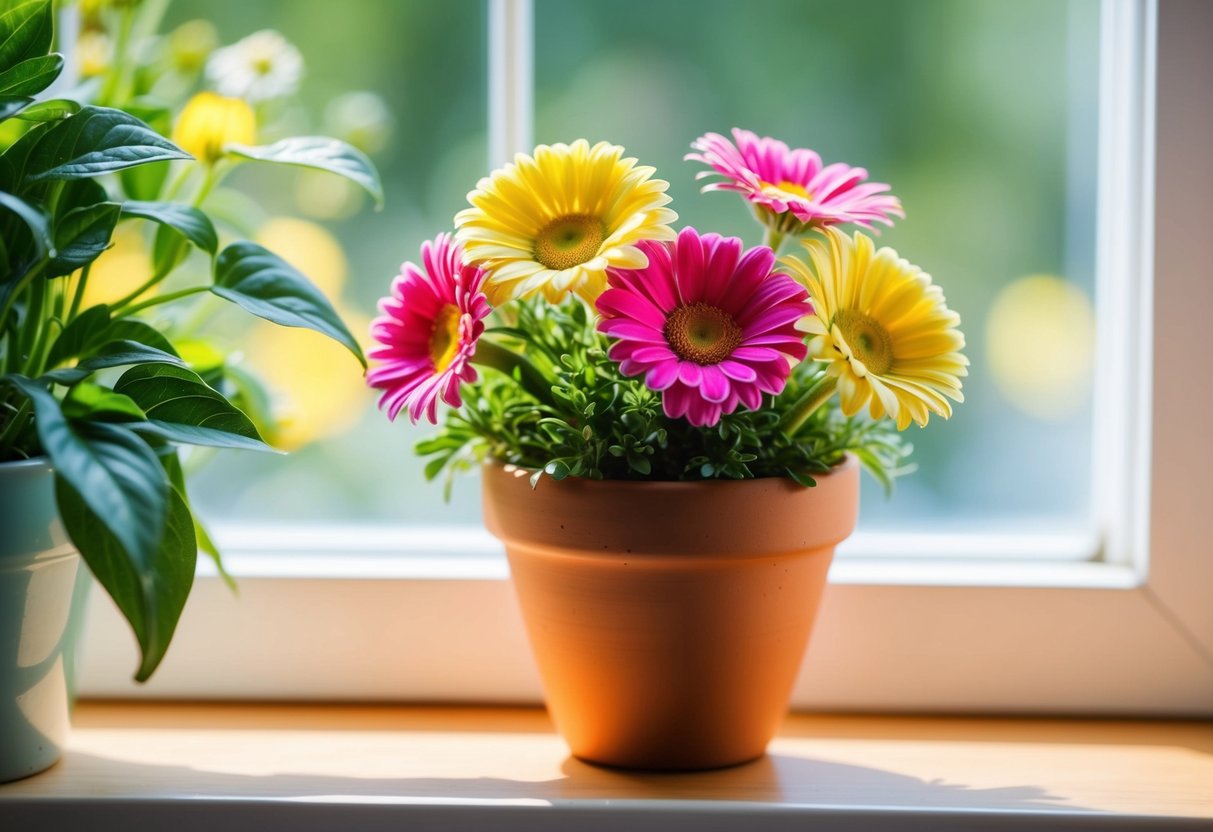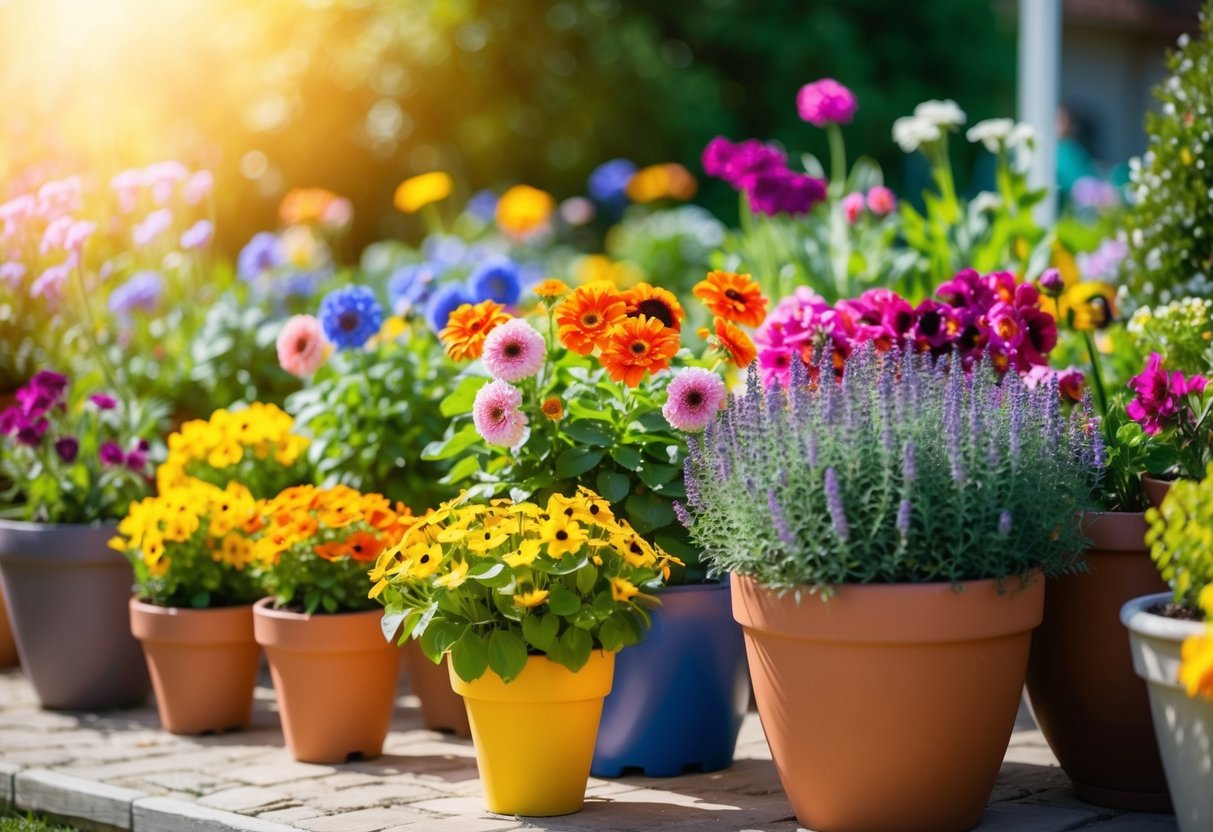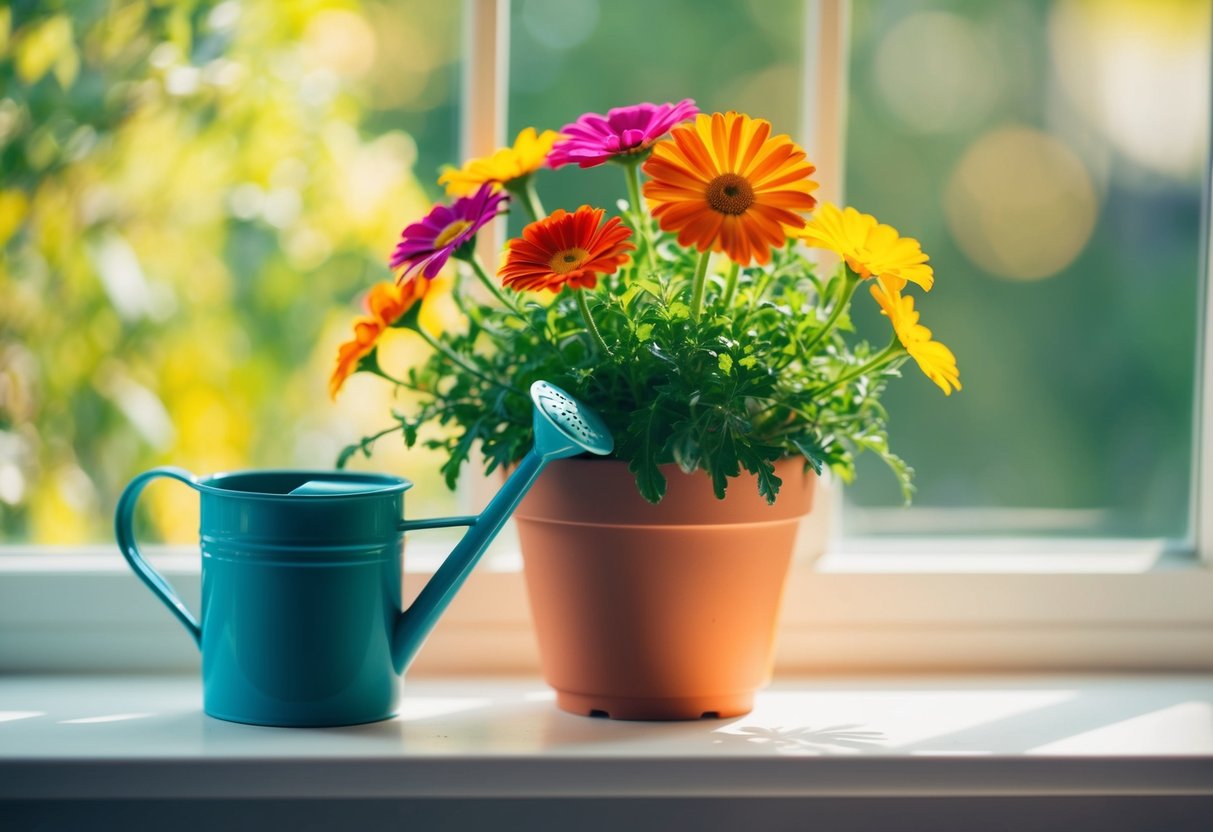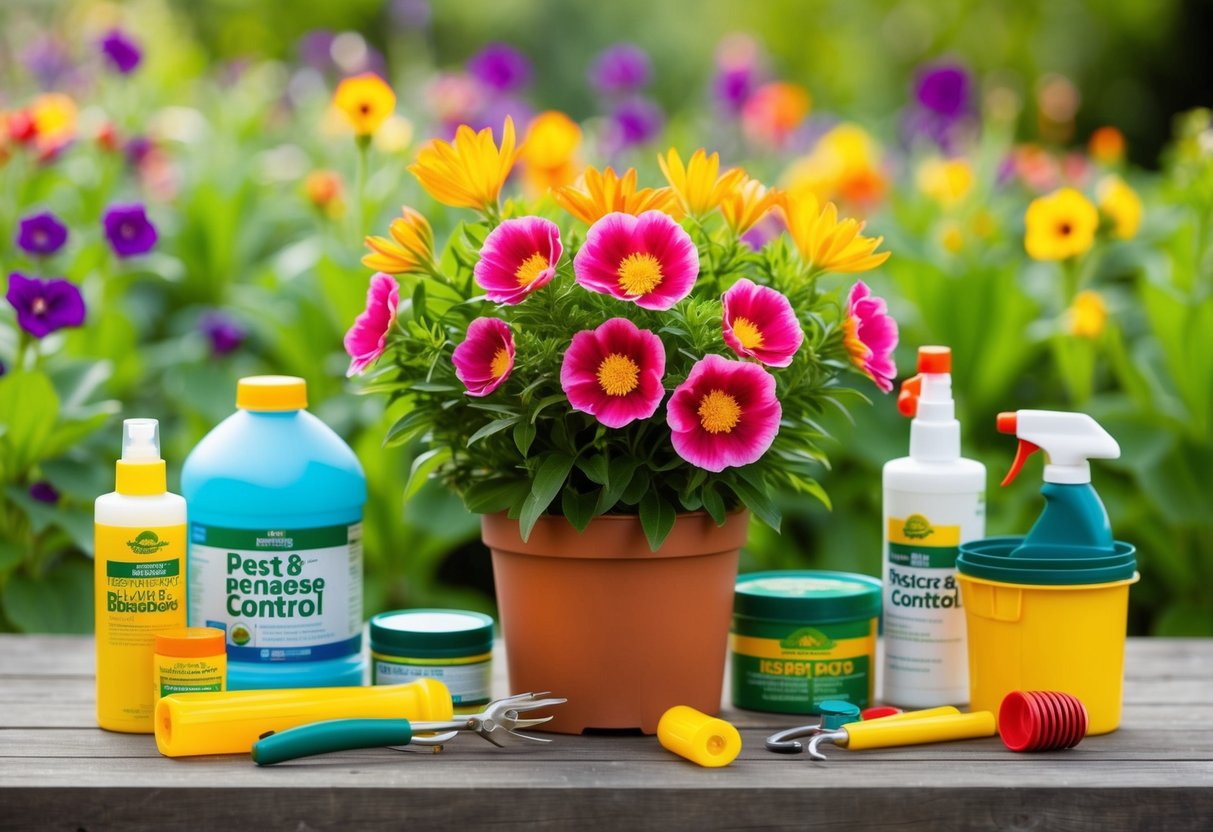What is the Easiest Potted Flower to Grow for Beginners?
Growing flowers in pots is a great way to add color and life to your space. Some flowers are known for being easy to grow, perfect for beginners or anyone looking to start container gardening. If you want a hassle-free gardening experience, consider planting marigolds. Marigolds are the easiest potted flower to grow because they thrive in a range of conditions and require minimal maintenance.

Petunias are another excellent choice for your container garden. They offer a bright variety of colors and bloom throughout the summer. Petunias do well in sunny spots and can beautifully cascade over the edges of your pots, making them a visually stunning option for patios.
Using pots can offer flexibility, allowing you to move your flowers as needed for sunlight or design preferences. Whether you’re looking to start a garden on your balcony or wish to brighten up your backyard, picking the right flowers can make the process rewarding and fun.
Selecting the Right Flowers

Choosing the right flowers for your pots is crucial. Consider sunlight and soil requirements, as these will directly affect your plants’ growth and blooms.
Understanding Sunlight Needs
When picking flowers for pots, think about how much sunlight your garden spot receives. Flowers like petunias thrive in full sun, meaning they need at least six hours of sunlight per day. These might be a good option if your spot is sunny. On the other hand, if your area is shadier, look for flowers that do well in partial shade. Snapdragons, for example, can tolerate less sun and still bloom beautifully.
It’s important to match your flowers with the amount of sunlight available. Too much or too little can affect their health and bloom potential. Make a list of flowers you are interested in and check their sunlight needs. This step will help ensure your potted garden is vibrant and flourishing.
Considering Soil Preferences
Soil type is another key factor when selecting flowers. Many potted flowers prefer well-draining soil. This ensures that the roots do not sit in too much water, which can cause rot. You can create well-draining soil by mixing garden soil with sand or perlite.
Some flowers need moist soil but not soggy. For example, nasturtiums need soil that stays slightly damp, so regular watering might be necessary. Read up on each flower’s specific soil preference before planting. Adjusting your choice of soil can lead to healthier plants and more stunning blooms. Make sure to consider these needs to keep your potted flowers healthy and thriving.
Top Easy-Care Potted Flowers

When choosing flowers to grow in pots, it’s best to select varieties that thrive with minimal fuss. Marigolds, petunias, and zinnias are among the top choices. Each offers unique benefits and visual appeal, making them perfect for adding color and charm to your space.
Marigolds: The Sunny Blooms
Marigolds are bright and cheerful flowers that are simple to grow in pots. They love sunlight and can tolerate various soil types. You can find them in shades of yellow, orange, and red.
These flowers are not only beautiful but also practical. They have a mild scent that repels certain garden pests. Keep them in a sunny spot and water when the soil feels dry. Marigolds bloom from late spring until the first frost, providing vibrant colors for months. They are a wonderful addition to any garden.
Petunias: Colorful and Versatile
Petunias are known for their wide range of colors, including pink, purple, white, and red. They produce abundant blooms that can fill any pot with a splash of color.
These flowers enjoy full sun and well-draining soil. Regular deadheading, or removing spent flowers, encourages more blooms. Petunias are also trailing plants, making them ideal for hanging baskets or pots where they can cascade over the edges. They need consistent watering, especially during hot weather. If you want a flower with plenty of visual impact, petunias are an excellent choice for your potted garden.
Zinnias: Vibrant and Hardy
Zinnias are tough flowers that thrive in pots. They come in various colors like red, pink, orange, and white. These flowers attract butterflies, enhancing your garden with both beauty and life.
Zinnias require full sun and regular watering, though they are quite resilient during dry spells. These flowers grow fast and have long-lasting blooms. Zinnias flourish with occasional feeding, using a balanced fertilizer to support growth. Their durability and vibrant colors make them a favorite for gardeners aiming for a lively display.
Essential Care Tips for Healthy Growth

To ensure your potted flowers flourish, focus on effective watering and proper fertilizing. These two factors play vital roles in keeping your plants healthy and vibrant.
Watering Needs
Potted flowers require consistent watering, but the amount depends on the type of plant and climate. It’s crucial to check if the potting soil is dry about an inch below the surface before watering. Overwatering can lead to root rot, so ensure pots have drainage holes.
You may find it helpful to set up a regular watering schedule, but adjust it during hot weather when plants need more water. Use a spray bottle for gentle watering, which helps avoid soil erosion.
Remember that factors like pot size and plant type determine how often you water. Some plants prefer evenly moist soil, while others need the soil to dry out between watering. Always get to know the particular needs of your plants to provide the best care.
The Importance of Fertilizing
Fertilizing your potted flowers can keep them blooming longer and growing healthily. Incorporating compost into the soil can provide a rich nutrient base. It’s beneficial to use a water-soluble fertilizer, as it’s easy to apply and quickly absorbed by plants.
Read and follow the instructions on the fertilizer packaging for ratios and frequency. Usually, you fertilize every two weeks during the growing season. Avoid over-fertilizing, which can damage roots and lead to poor growth.
Using an all-purpose fertilizer is a convenient option suitable for most flowers, but some plants might need specific nutrients. Check what works best for each flower type to boost their health.
Dealing With Pests and Diseases

Keeping your potted flowers healthy involves understanding how to manage pests and avoid diseases. By promoting natural helpers and following preventive strategies, you can enjoy vibrant blooms with minimal hassle.
Natural Predators and Pollinators
Encouraging natural predators and pollinators in your garden can help control pest populations. Ladybugs, for example, are excellent at eating aphids. Encouraging birds to visit your garden can also help, as they feed on insects.
Planting flowers like marigolds can attract beneficial insects. Marigolds not only brighten your garden but also serve as a natural pest deterrent. Healthy pollinator activity can assist in the plant’s growth and resilience, resulting in a thriving garden environment. To attract these helpers, try planting a diverse range of flowers.
Preventing Common Illnesses
Proper care is essential for preventing common illnesses like mildew. Make sure your potted plants have good airflow by not crowding them. Overwatering can lead to fungal growth, so always check soil moisture levels before watering.
Select disease-resistant plants, such as lemongrass, which is known for its pest-repellent properties. Keep your pots clean and free from debris to reduce the chance of infections. If you notice any signs of illness, remove affected leaves promptly to prevent spreading. By ensuring the right conditions and regular monitoring, you can safeguard your plants from many common problems.
Creative Planting and Arrangements

When you’re creating beautiful container gardens, combining flowers and plants in creative ways can enhance their visual appeal. This involves selecting vibrant plants and understanding how they can complement each other for stunning displays.
The Art of Companion Planting
Companion planting involves pairing plants that benefit each other. Certain flowers and herbs, for example, can protect each other from pests or help each other grow better in containers. For instance, pairing petunias with marigolds not only adds a splash of color but also helps deter certain insects.
Colorful flower combinations can also enhance aesthetics. Consider using annual flowers like zinnias alongside herbs. Basil or thyme pair well, adding greenery and benefiting from the flowers’ shade. If you use mint, remember it can spread, so keep it in check. Mixing these plants in pots lets you not only enjoy flowers but also harvest fresh herbs. Explore more about combining flowers and herbs for containers on this page.
Potted Flower Displays
Creating eye-catching displays with flowers in containers involves playing with different heights, colors, and textures.
A three-layer arrangement can make your pots pop. Choose a tall plant for the center, such as ornamental grasses or canna lilies. Surround these with medium-height blooms like geraniums and finish with a trailing plant such as sweet potato vine.
Color harmony in your displays can create a pleasing effect.
Planting purple petunias with white geraniums can create a dramatic look. Include foliage plants like coleus for texture and contrasting colors. Smart placement and combining of these elements can turn any container garden into a work of art.
Get more ideas for stunning container displays from this garden article.







